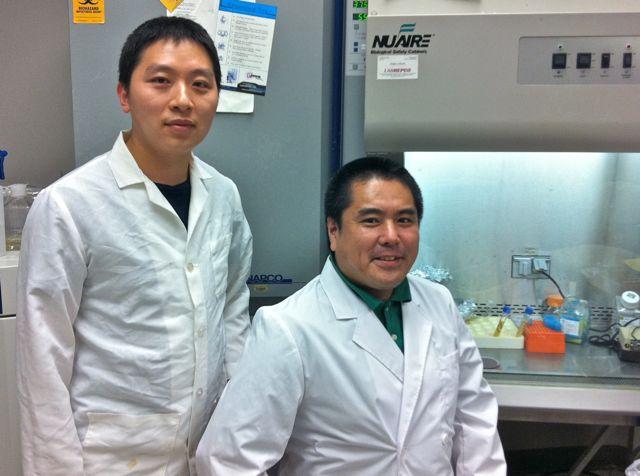Bacterium Causing Periodontal Disease Isolated3 min read
Ann Arbor, MI — June 4, 2013 — University of Michigan Medical School researchers, working with colleagues from the U-M School of Dentistry, have discovered a bacterium that is responsible for causing periodontitis, a common but largely preventable oral infectious disease.

Periodontitis is characterized by a progressive loss of bone around the teeth. Without proper oral hygiene among those at risk for the disease and if left untreated, the teeth loosen and are eventually lost.
Scientists and oral health care providers have known for decades that bacteria are responsible for periodontitis. Until now, however, they did not know precisely which bacterium was to blame.
Medical School researchers Drs. Yizu Jiao and Naohiro Inohara collaborated with Drs. William Giannobile and Julie Marchesan, a member of Giannobile’s lab team, at the School of Dentistry. Jiao is a postdoctoral fellow in the Inohara’s laboratory. Inohara is a research associate professor in the Medical School’s Department of Pathology. Giannobile chairs the School of Dentistry’s Department of Periodontics and Oral Medicine.
Two Important Discoveries
“Identifying the mechanism that is responsible for periodontitis is a major discovery,” said Jiao, lead author of the paper that recently appeared in the journal Cell Host and Microbe. He said by using a mouse model to conduct the research “we were able to isolate the bacterium, NI1060, that normally lives in the oral cavity, but triggers tooth-supporting bone loss which leads to periodontitis.” Another major discovery was that a receptor which lines the oral cavity, Nod1, is activated by the NI1060 bacterium.
Scientists have known that periodontitis is caused by multiple bacteria and that some of them can damage the gingiva, the tissue surrounding the teeth. “But they also know that gingival damage is not sufficient to trigger bone loss, and that unknown bacterial are responsible,” Inohara said.
Jiao and Inohara developed a way to induce damage to the gingiva between the molar teeth of mice. Over time, they discovered that the NI1060 bacterium accumulated at the damaged site. To prove NI1060 causes the disease, the bacterium was introduced into germ-free mice with gingival damage. This resulted in bone loss around the teeth, Inohara said. Genomic sequencing revealed that NI1060 is a bacterium that is related to bacteria associated with the development of aggressive periodontitis in humans.
“Nod1 is a part of our protective mechanisms against bacterial infection. It helps us to fight infection by recruiting neutrophils, blood cells that act as bacterial killers,” Inohara said. “It also removes harmful bacteria during infection.” However, in the case of periodontitis, accumulation of NI1060 stimulates Nod1 to trigger neutrophils and osteoclasts which are cells that destroy bone in the oral cavity.
Developing Personalized Therapies
While these discoveries are important, Inohara said it may take years for new therapies to be developed that dentists might be able to use in clinics to help patients with periodontal disease.
“The findings from this study underscore the connection between beneficial and harmful bacteria that normally reside in the oral cavity, how a harmful bacterium causes the disease, and how an at-risk patient might respond to such bacteria,” Giannobile said. “This improved molecular understanding may help in developing more personalized therapies for patient management.”
Until then, Giannobile added, “Regular checkups with a person’s oral health care provider and practicing good oral hygiene to reduce the prevalence of bacteria will continue to play a crucial role in minimizing periodontitis.”
